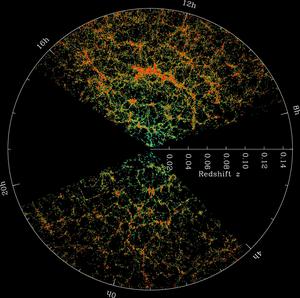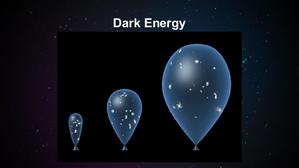Glossary term: 暗物质
Description: 暗物质是一种假设中的物质形式,它具有质量,但完全透明,且不发光。它作为与各种引力相互作用有关现象的联合解释被提出。
早期关于暗物质存在的证据来自于星系团中高速运动的星系。假设存在额外的质量有助于解释为什么这些星系的运动速度很快,却仍然被引力束缚在所属的星系团内,而没有逃逸出去。维拉·鲁宾(Vera Rubin)等人对盘状星系中恒星和气体轨道速度的测量推动了暗物质概念的广泛接受:根据引力定律,要想解释观测到的高转动速度,除了可见物质之外,还需要有相当大质量的物质。最近,引力透镜观测也显示星系团中存在大量不发光物质。
在宇宙学中,宇宙膨胀历史表明,宇宙中存在的物质比可见物质要多。早期宇宙结构形成的常见解释也依赖于暗物质的存在。基于这些原因,标准宇宙学模型被称为”Lambda CDM模型“,其中CDM代表冷暗物质(即速度慢的暗物质)。
暗物质的本质是宇宙学和粒子物理学中研究和讨论的热点话题。暗物质的有关证据仍然是间接的,主要依赖于观测暗物质质量对发光物质或光的影响。有几种尚未被检测到的基本粒子被提出作为暗物质的可能组成部分,但专门用于寻找这些候选粒子的实验到目前为止都未能取得成功。也有一些替代性的解释被提出,声称可以在不涉及新粒子的情况下解释相关观测结果。
Related Terms:
See this term in other languages
Term and definition status: The original definition of this term in English have been approved by a research astronomer and a teacher The translation of this term and its definition is still awaiting approval
The OAE Multilingual Glossary is a project of the IAU Office of Astronomy for Education (OAE) in collaboration with the IAU Office of Astronomy Outreach (OAO). The terms and definitions were chosen, written and reviewed by a collective effort from the OAE, the OAE Centers and Nodes, the OAE National Astronomy Education Coordinators (NAECs) and other volunteers. You can find a full list of credits here. All glossary terms and their definitions are released under a Creative Commons CC BY-4.0 license and should be credited to "IAU OAE".
If you notice a factual or translation error in this glossary term or definition then please get in touch.
Related Media
暗物质
Credit: 美国国家航空航天局、欧空局、M.J. Jee 和 H. Ford(约翰霍普金斯大学) credit link
License: CC-BY-4.0 Creative Commons 署名 4.0 国际 (CC BY 4.0) icons
SDSS 红移分布图
Credit: M.布兰顿和斯隆数字巡天 credit link
License: CC-BY-4.0 Creative Commons 署名 4.0 国际 (CC BY 4.0) icons
Related Activities
Dark matter & dark energy (Part 2) – Understanding the nature of dark matter and dark energy
astroEDU educational activity (links to astroEDU website) Description: Let's investigate the nature of dark matter and energy with gravitational lensing!
License: CC-BY-4.0 Creative Commons 署名 4.0 国际 (CC BY 4.0) icons
Tags:
Experiment
, Invisible
Age Ranges:
12-14
, 14-16
, 16-19
, 19+
Education Level:
Informal
, Middle School
Areas of Learning:
Guided-discovery learning
, Interactive Lecture
, Modelling
, Problem-solving
Costs:
Medium Cost
Duration:
45 mins
Group Size:
Group
Skills:
Constructing explanations
, Developing and using models
, Engaging in argument from evidence
Dark matter and Dark energy (Part 1) – Discovering the main components of the Universe
astroEDU educational activity (links to astroEDU website) Description: Lets' investigate gravity, dark matter and dark energy with some very simple experiments!
License: CC-BY-4.0 Creative Commons 署名 4.0 国际 (CC BY 4.0) icons
Tags:
Experiment
, Galaxies
Age Ranges:
12-14
, 14-16
, 16-19
, 19+
Education Level:
Informal
, Middle School
Areas of Learning:
Guided-discovery learning
, Interactive Lecture
, Modelling
, Observation based
, Other
, Problem-solving
Costs:
Low Cost
Duration:
45 mins
Group Size:
Group
Skills:
Constructing explanations
, Developing and using models
, Engaging in argument from evidence
, Planning and carrying out investigations












